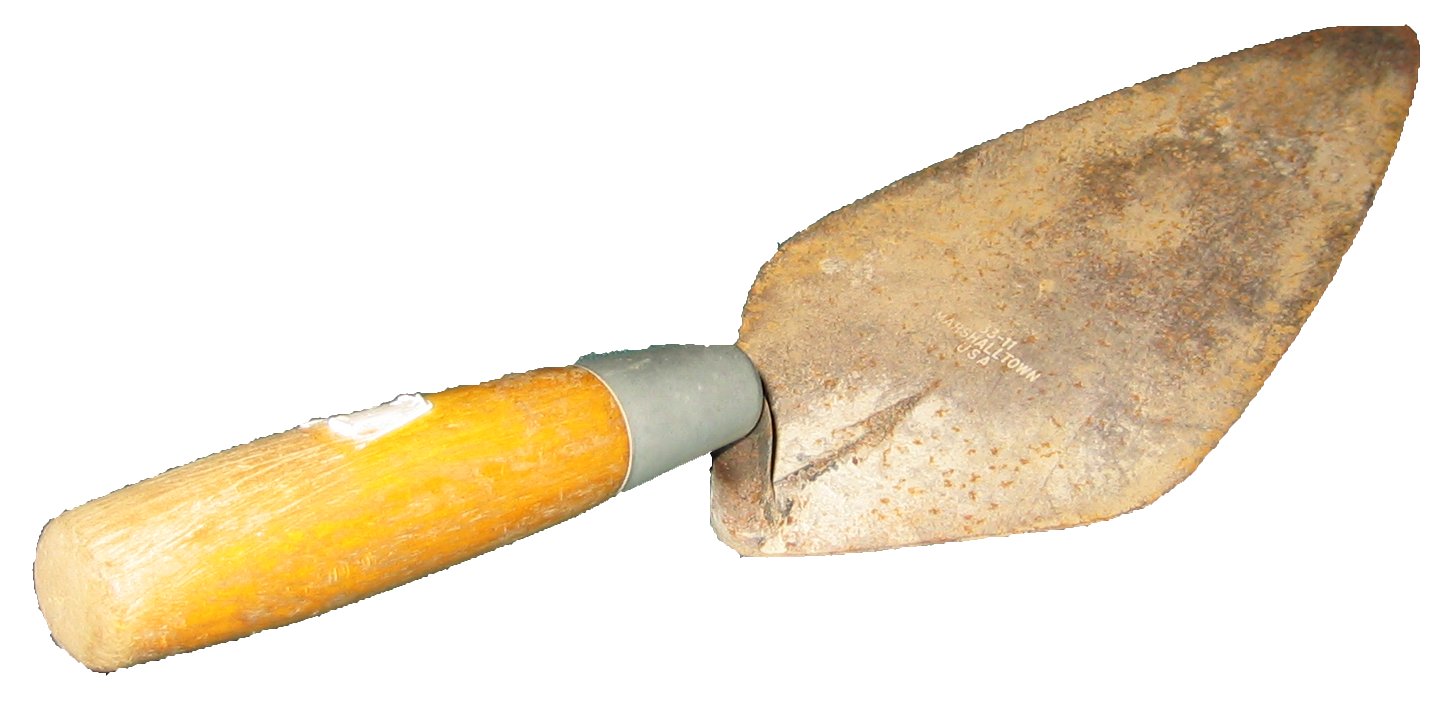Masonry trowel on:
[Wikipedia]
[Google]
[Amazon]
 The Masonry trowel is a hand
The Masonry trowel is a hand
 The Masonry trowel is a hand
The Masonry trowel is a hand trowel
A trowel is a small hand tool used for digging, applying, smoothing, or moving small amounts of viscous or particulate material. Common varieties include the masonry trowel, garden trowel, and float trowel.
A power trowel is a much larger gas ...
used in brickwork
Brickwork is masonry produced by a bricklayer, using bricks and mortar. Typically, rows of bricks called '' courses'' are laid on top of one another to build up a structure such as a brick wall.
Bricks may be differentiated from blocks by s ...
or stonework
Stonemasonry or stonecraft is the creation of buildings, structures, and sculpture using stone as the primary material. It is one of the oldest activities and professions in human history. Many of the long-lasting, ancient shelters, temples, mo ...
for levelling, spreading and shaping mortar or concrete. They come in several shapes and sizes depending on the task. The following is a list of the more common masonry trowels:
* Brick trowel: or mason's trowel is a point-nosed trowel for spreading mortar on bricks or concrete
Concrete is a composite material composed of fine and coarse aggregate bonded together with a fluid cement (cement paste) that hardens (cures) over time. Concrete is the second-most-used substance in the world after water, and is the most wi ...
blocks with a technique called "buttering". The shape of the blade allows for very precise control of mortar placement.
* Bucket trowel: a wide-bladed tool for scooping mortar from a bucket
A bucket is typically a watertight, vertical Cylinder (geometry), cylinder or Truncation (geometry), truncated Cone (geometry), cone or square, with an open top and a flat bottom, attached to a semicircular carrying handle (grip), handle called ...
; it is also good for buttering bricks and smoothing mortar.
* Concrete finishing trowel: is used to smooth a surface after the concrete has begun to set; it is held nearly level to the surface of the concrete, and moved with a sweeping arc across the surface.
* Corner trowels: used for shaping concrete around internal or external corners; the handle is located at the center of a 90-degree bend in the blade for balance and the ability to apply even pressure to both sides of a corner.
* Gauging trowel: a round-nosed trowel used for mixing mortar and applying small amounts in confined areas; it is also used to replace crumbled mortar and to patch concrete.
* Margin trowel: a flat-nosed trowel used to work mortar in tight spaces and corners where a larger pointed trowel will not fit.
* Pointing trowel: a smaller version of the brick trowel. Useful for filling in small cavities and repairing crumbling mortar joints.
* Pool trowel or round trowel: a variation of the concrete finishing trowel; rounded blade prevents it from digging into wet concrete.
* Step trowel: similar to the corner trowel, it is used for shaping inside angles on concrete steps; the center of the 90-degree bend in the blade allows for rounded edges.
* Tile setter: a brick trowel with an extra-wide blade to hold more mortar than a standard brick trowel. It is ideal for smoothing mortar on large bricks and blocks.
* Tuck pointer: used for neatly packing mortar between bricks and blocks when repointing and repairing crumbling mortar in masonry
Masonry is the building of structures from individual units, which are often laid in and bound together by mortar; the term ''masonry'' can also refer to the units themselves. The common materials of masonry construction are bricks, building ...
walls.
References
* ''Reader's Digest Book of Skills and Tools'',Reader's Digest
''Reader's Digest'' is an American general-interest family magazine, published ten times a year. Formerly based in Chappaqua, New York, it is now headquartered in midtown Manhattan. The magazine was founded in 1922 by DeWitt Wallace and his wi ...
. pp. 92–93
{{Stonemasonry
Mechanical hand tools
Stonemasonry tools